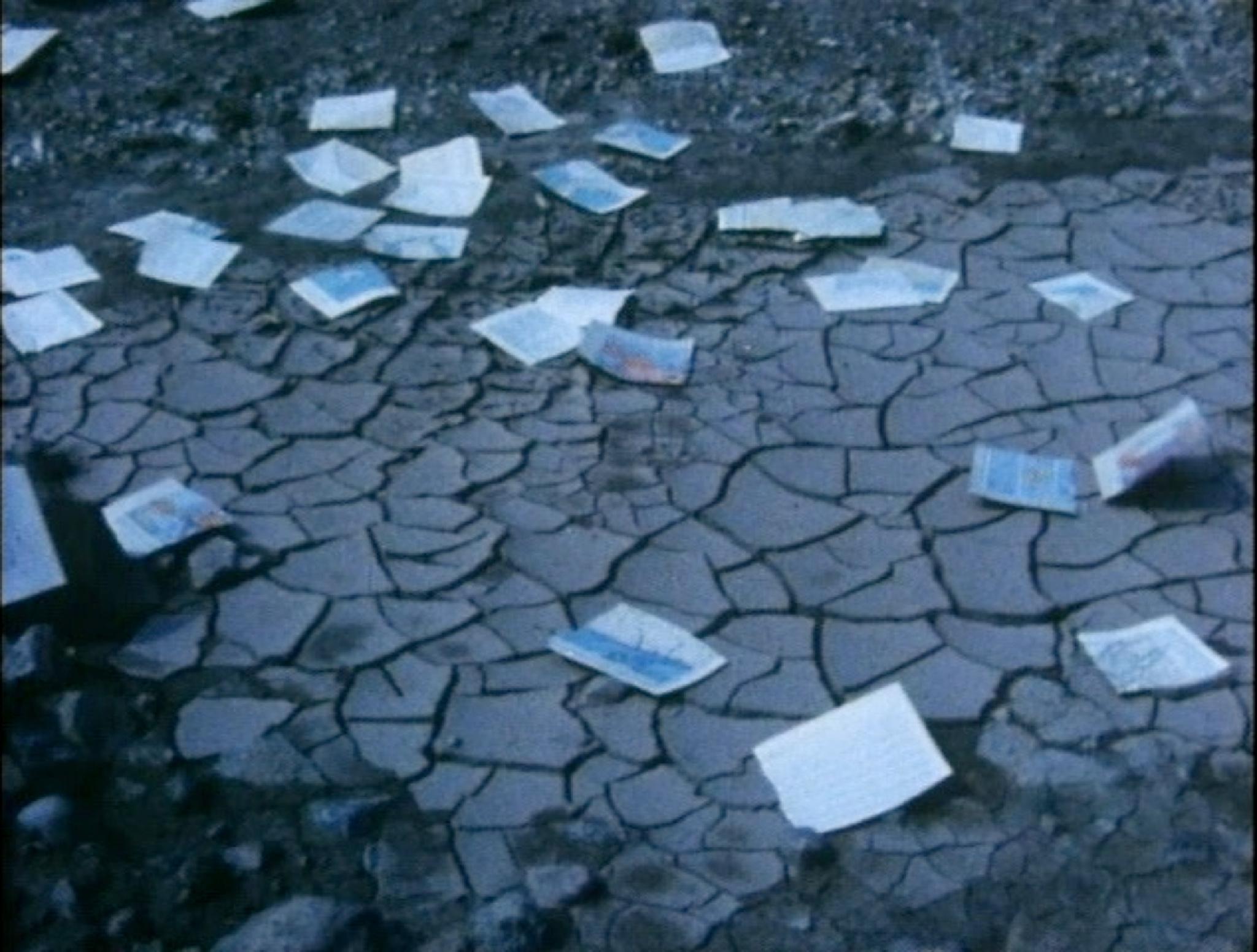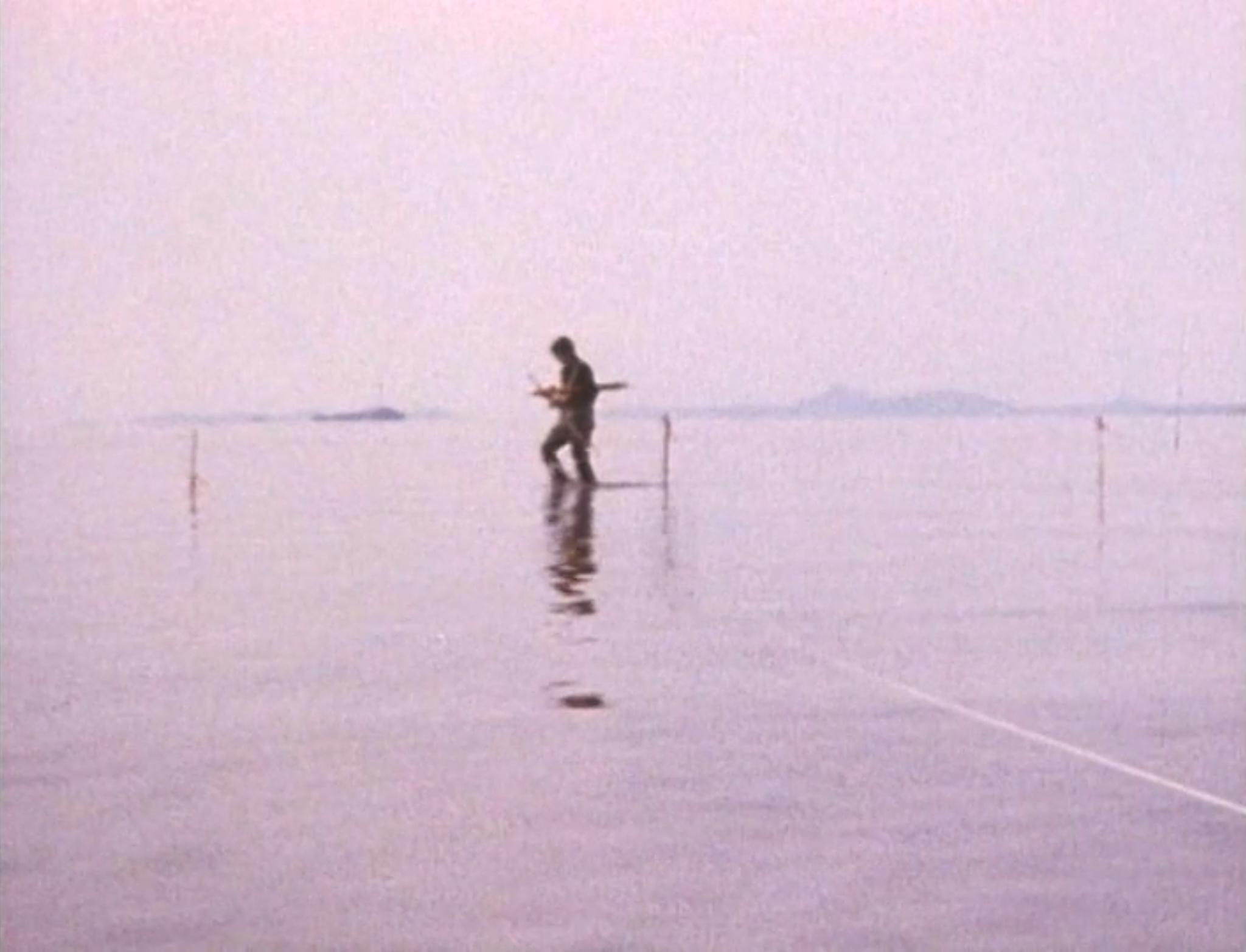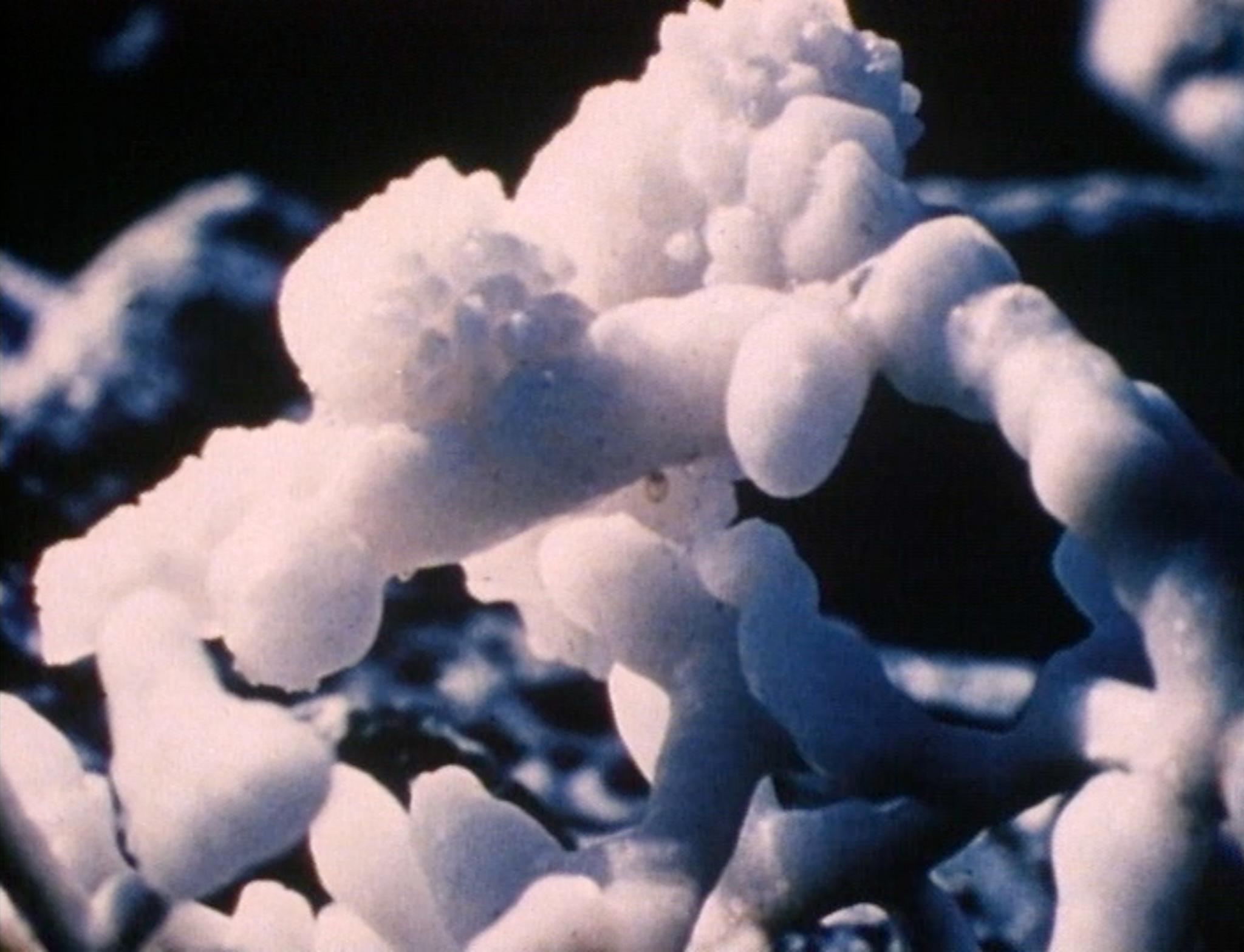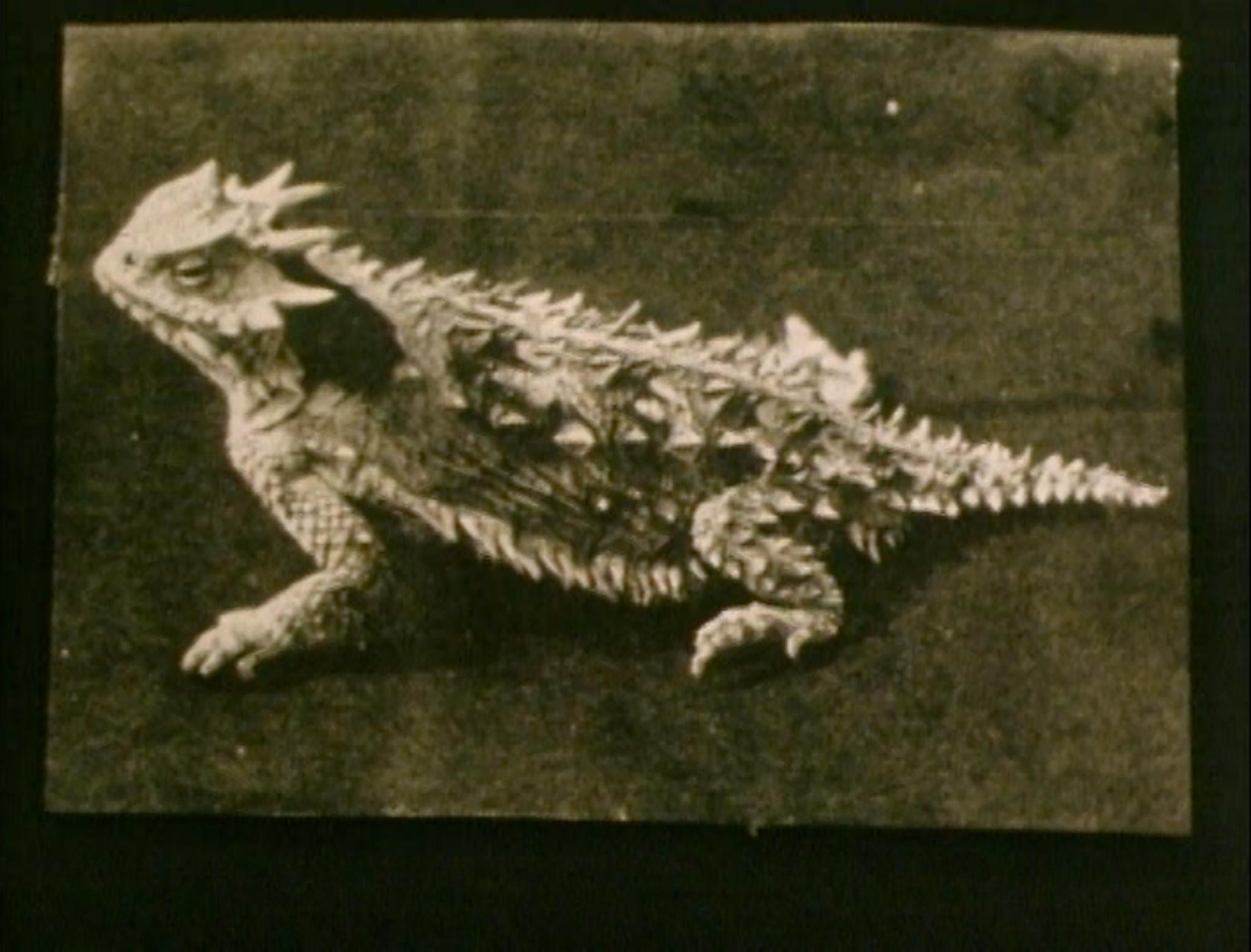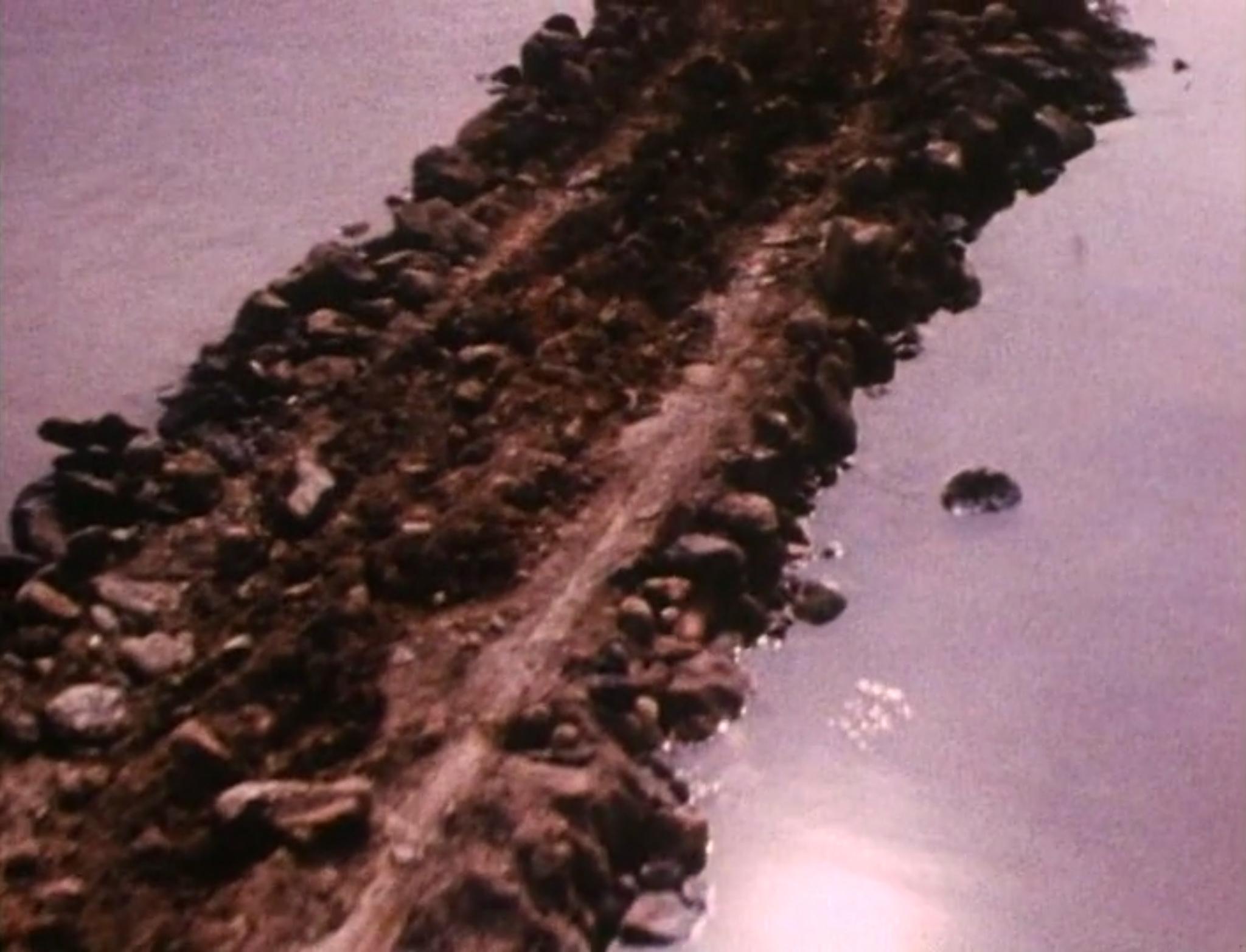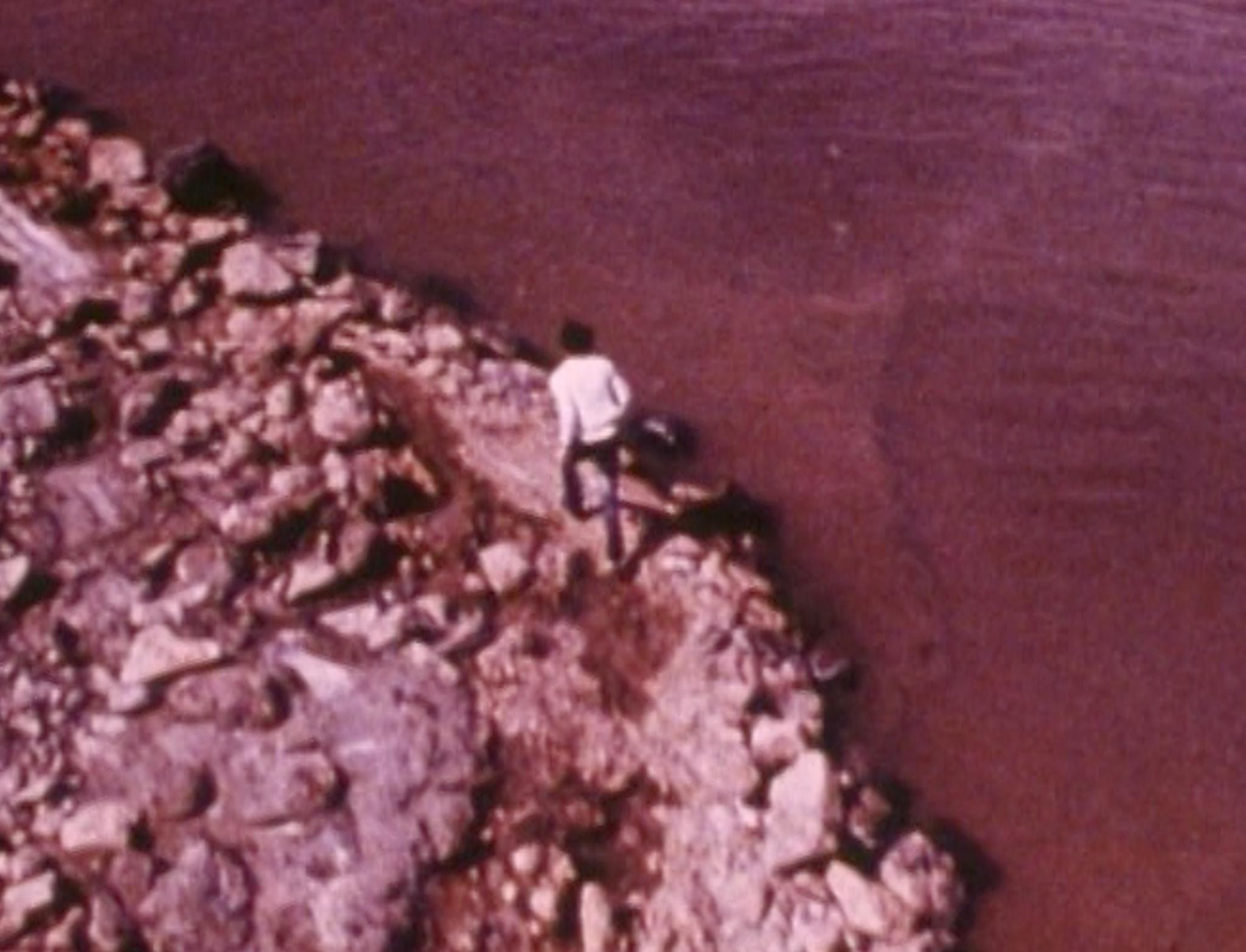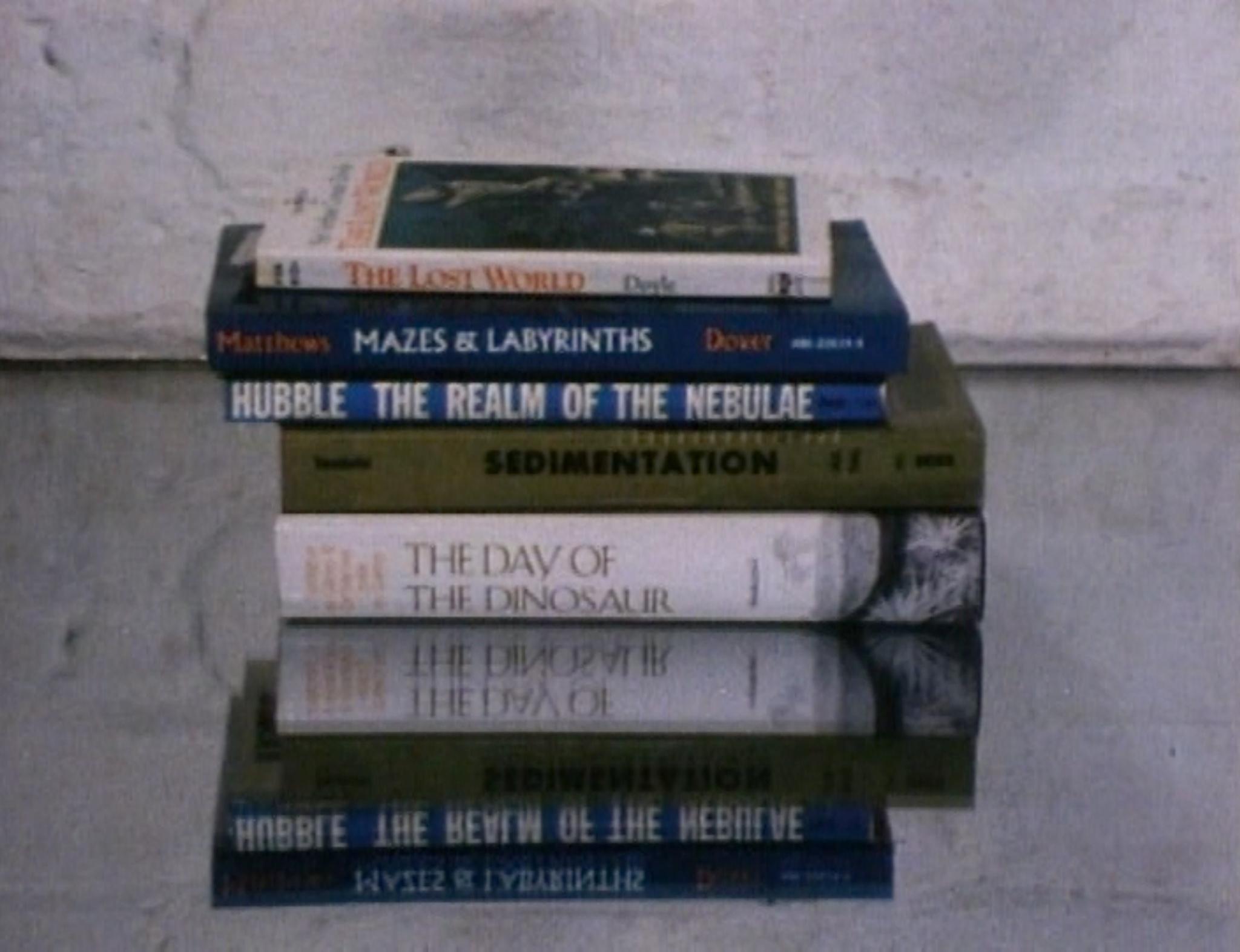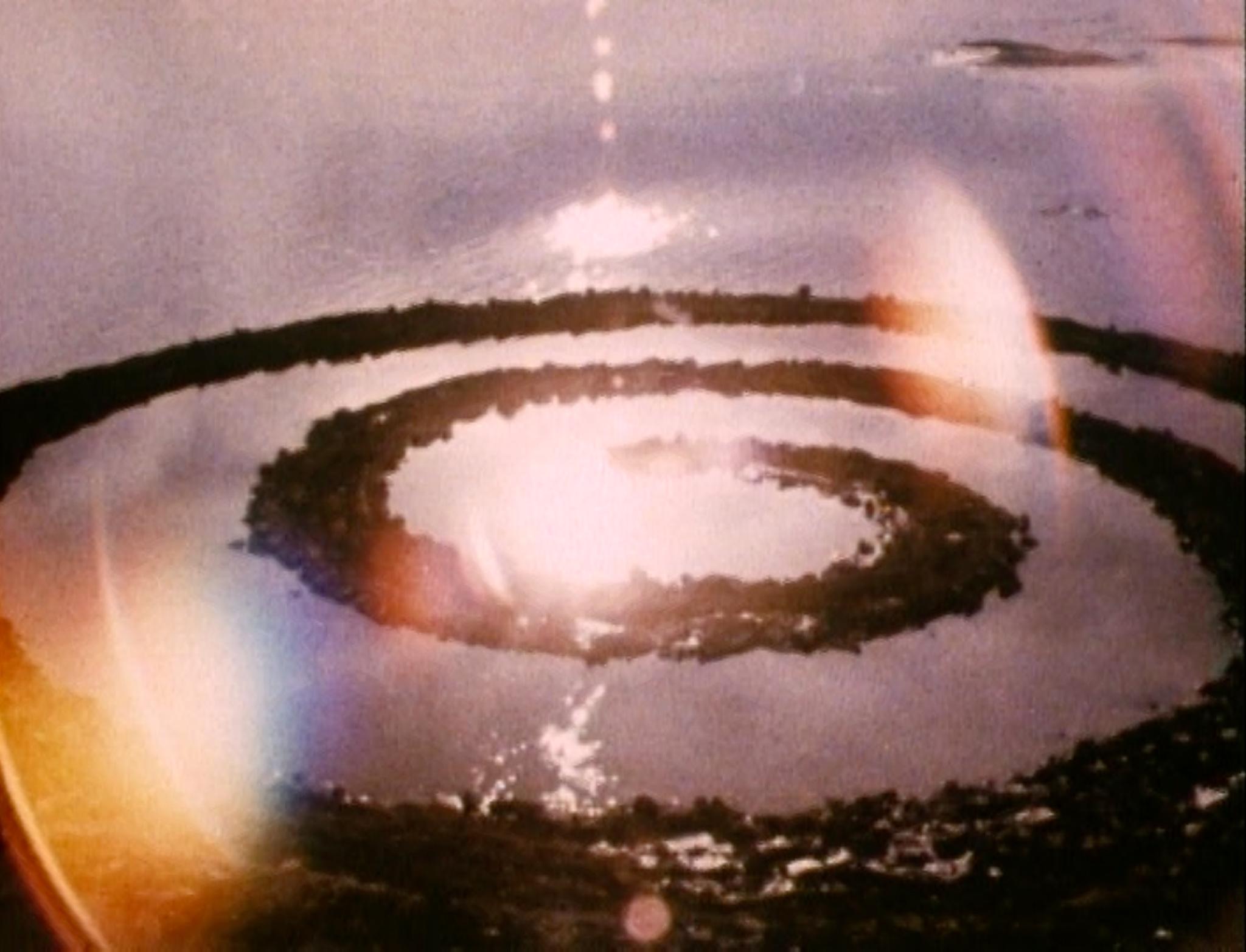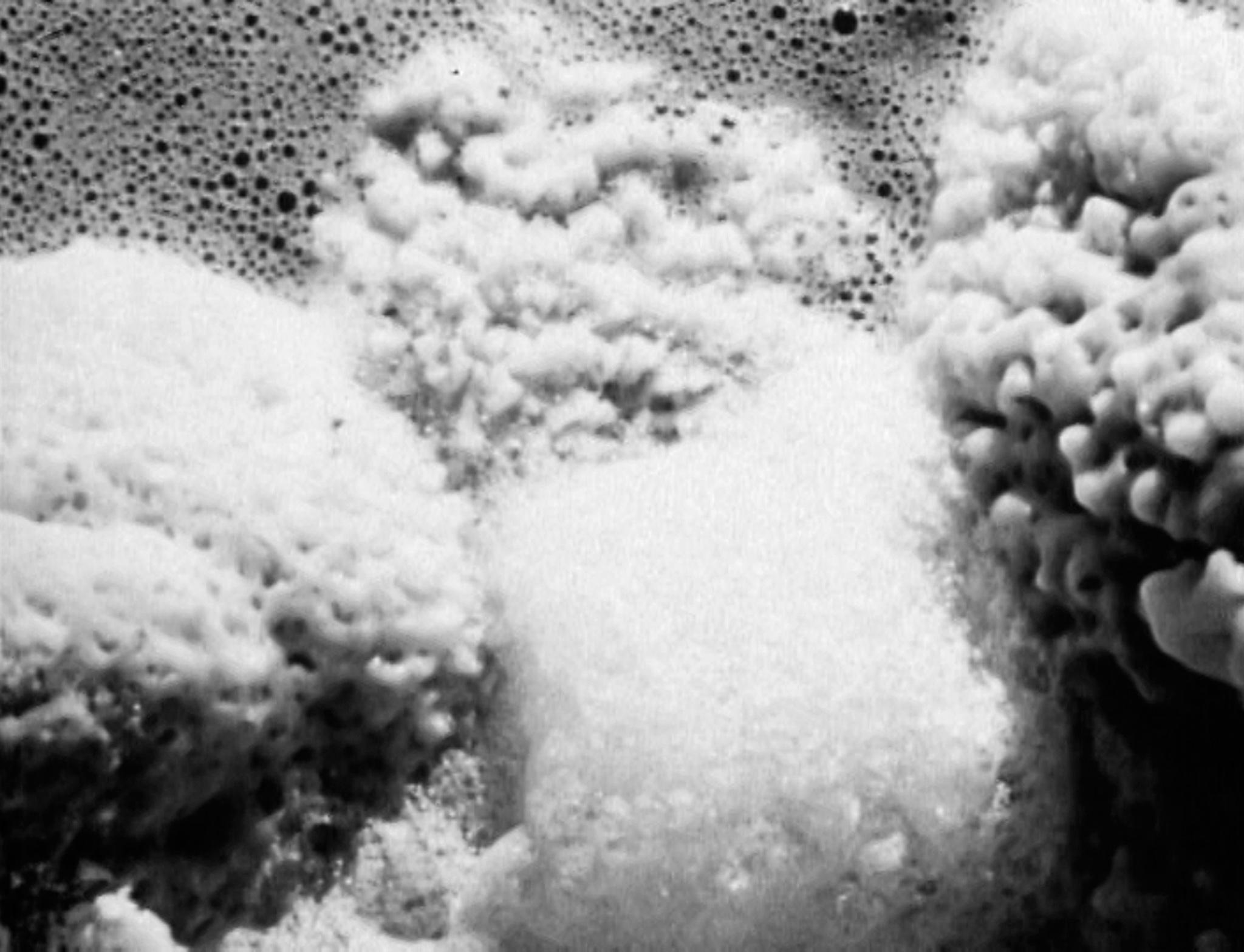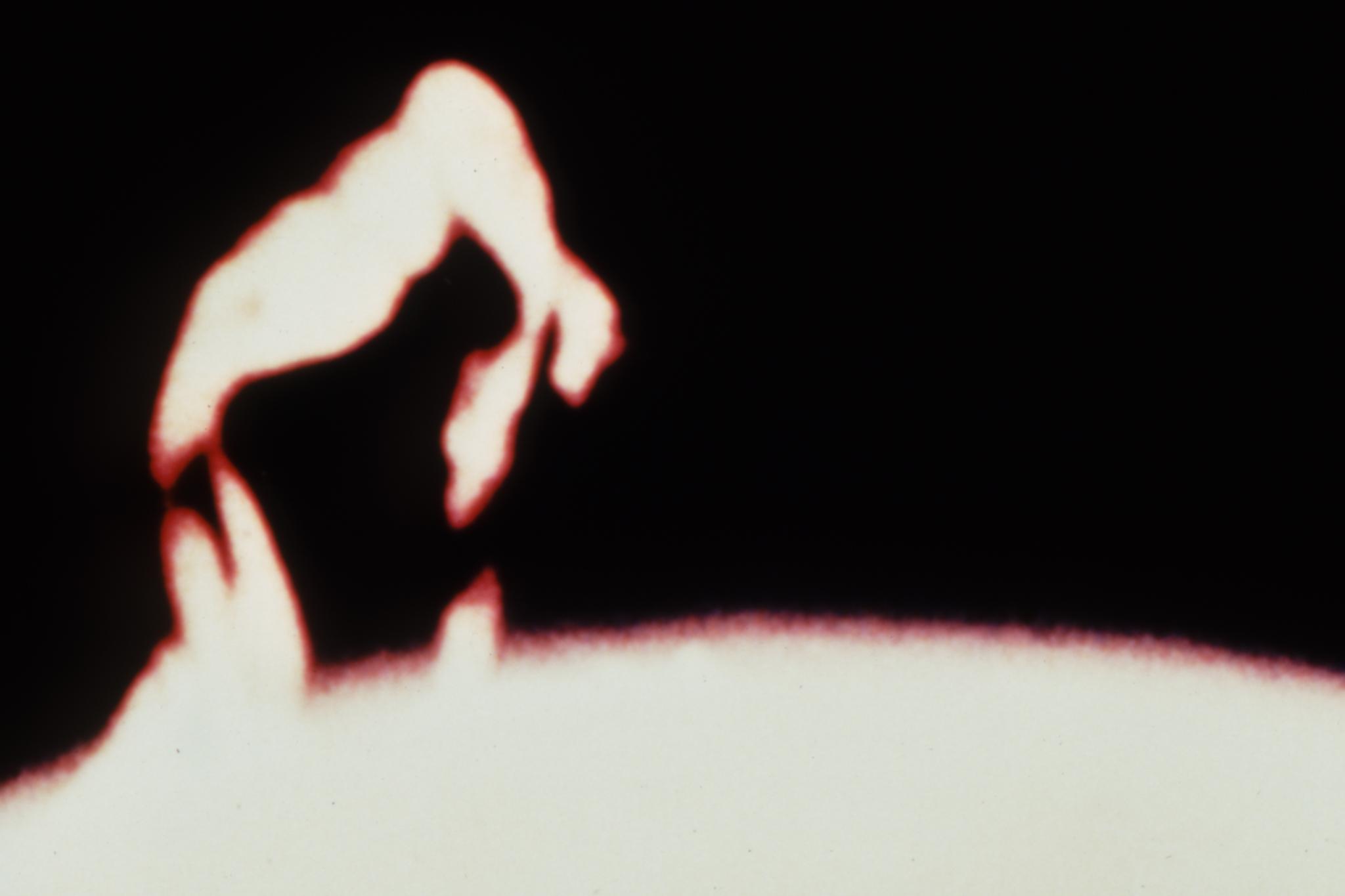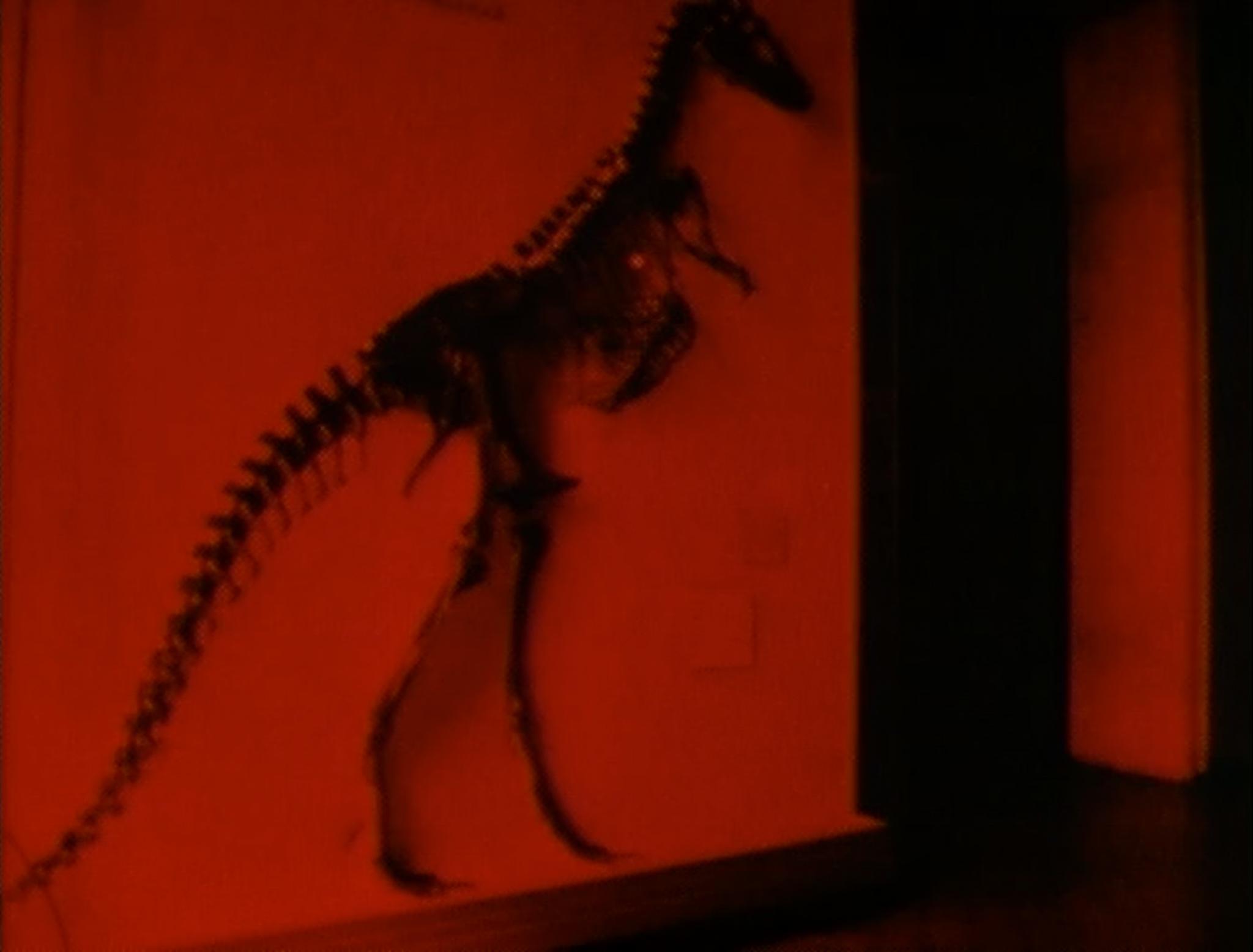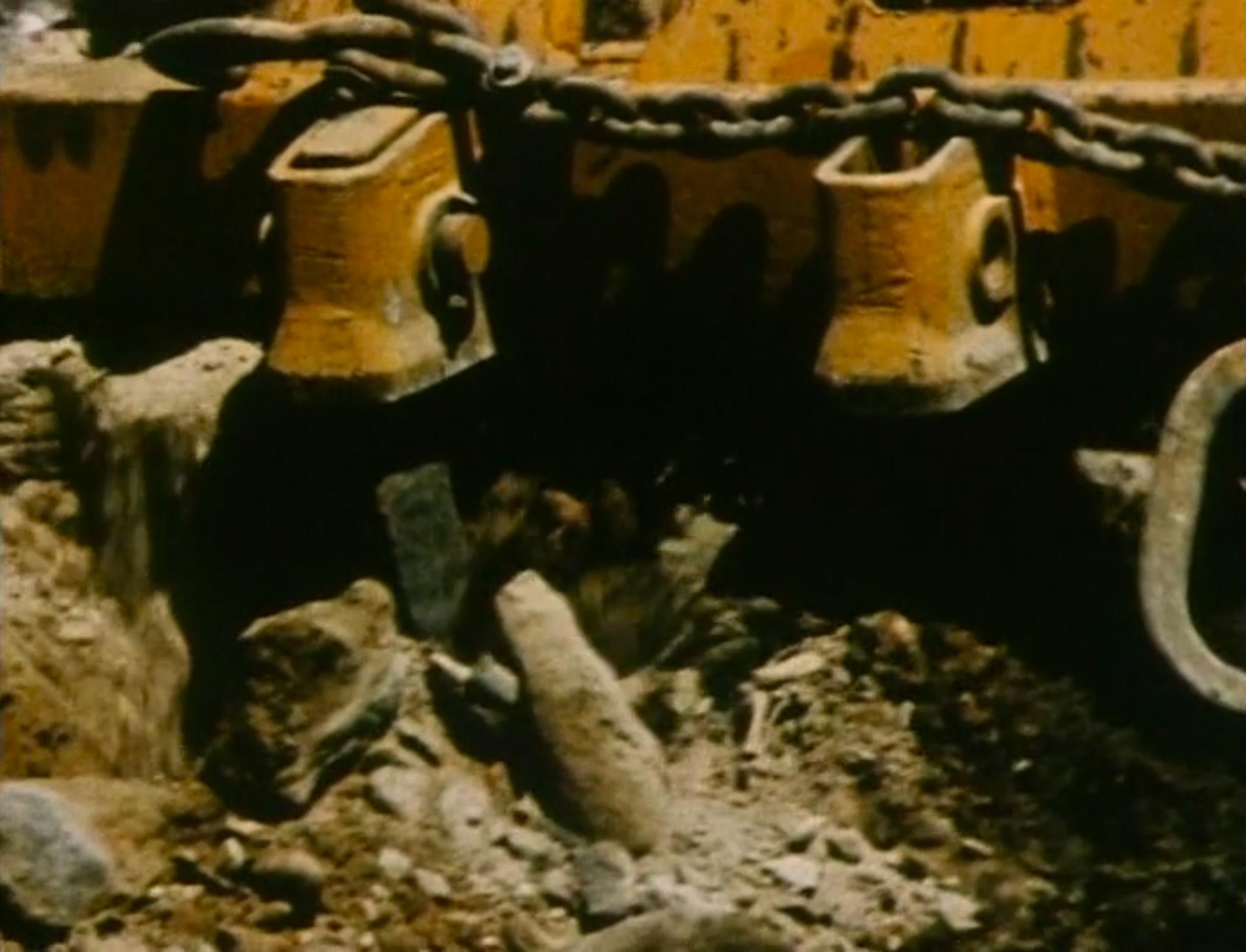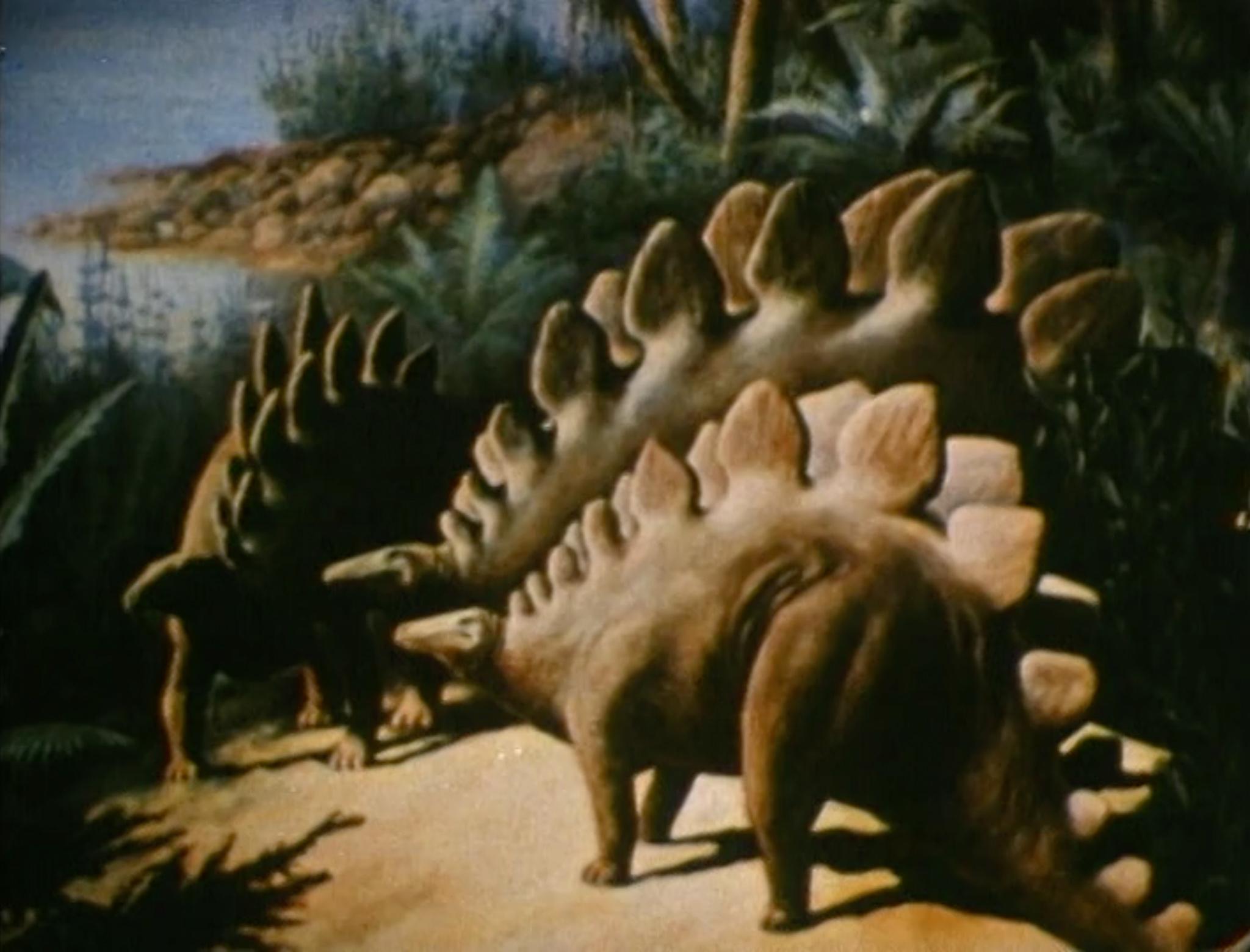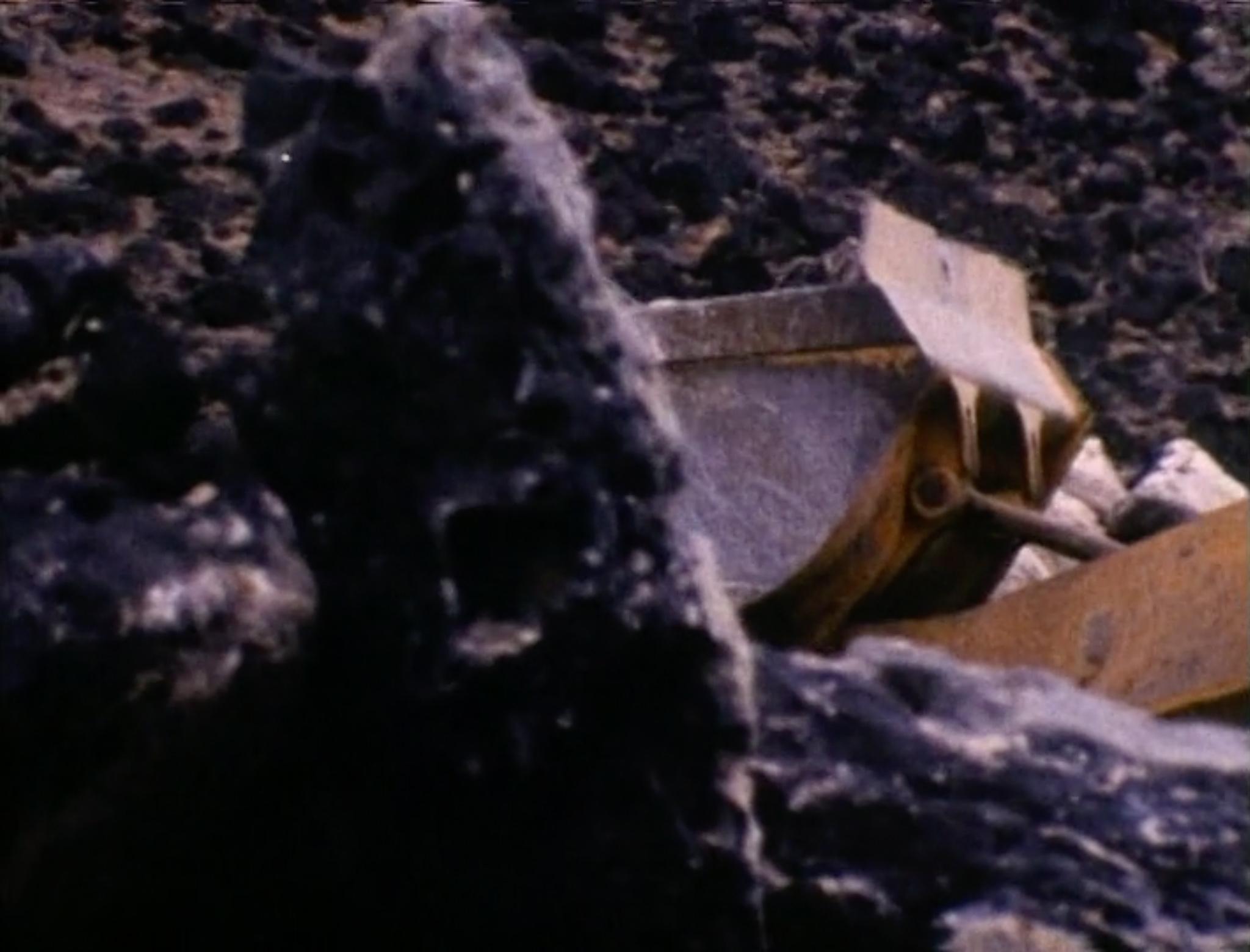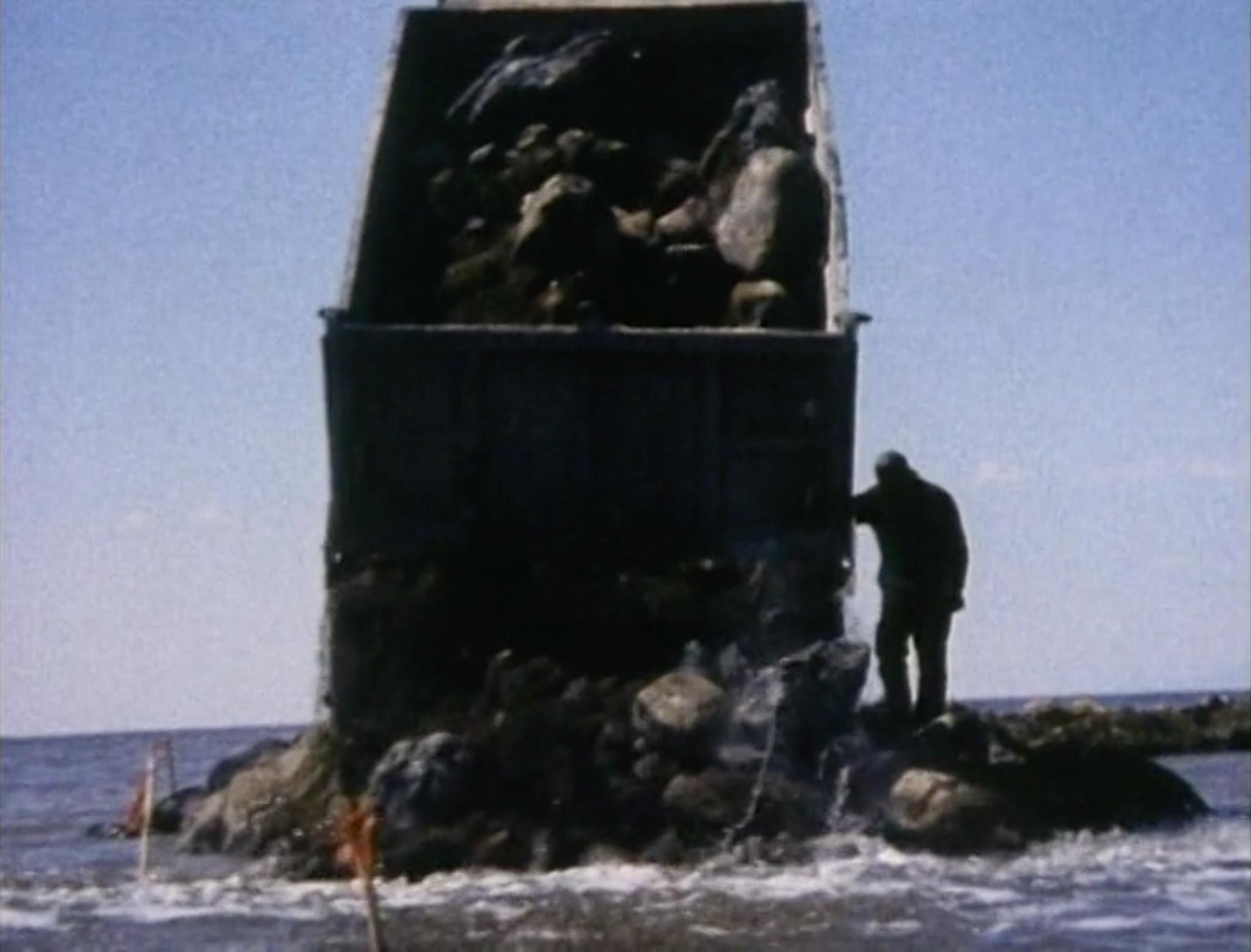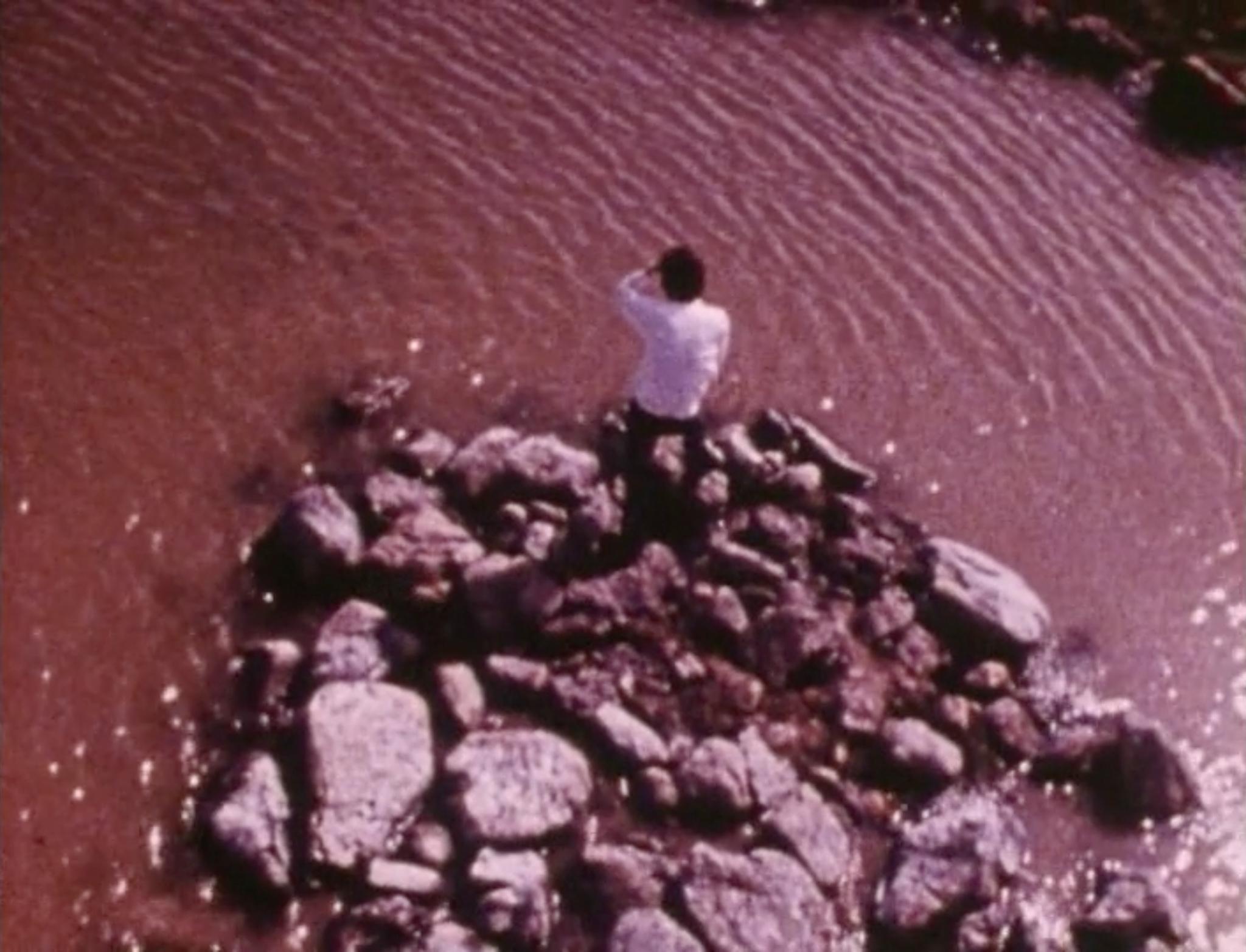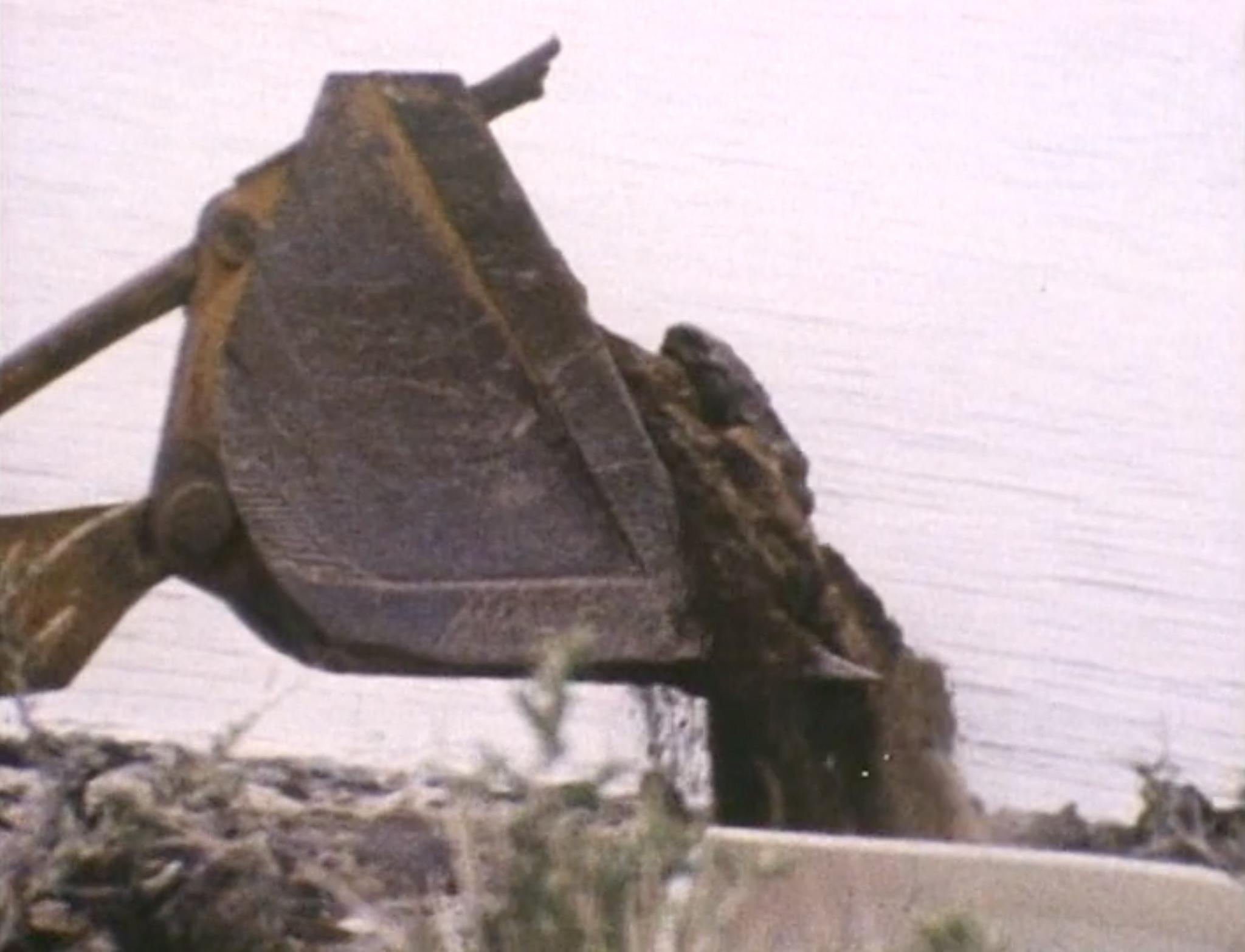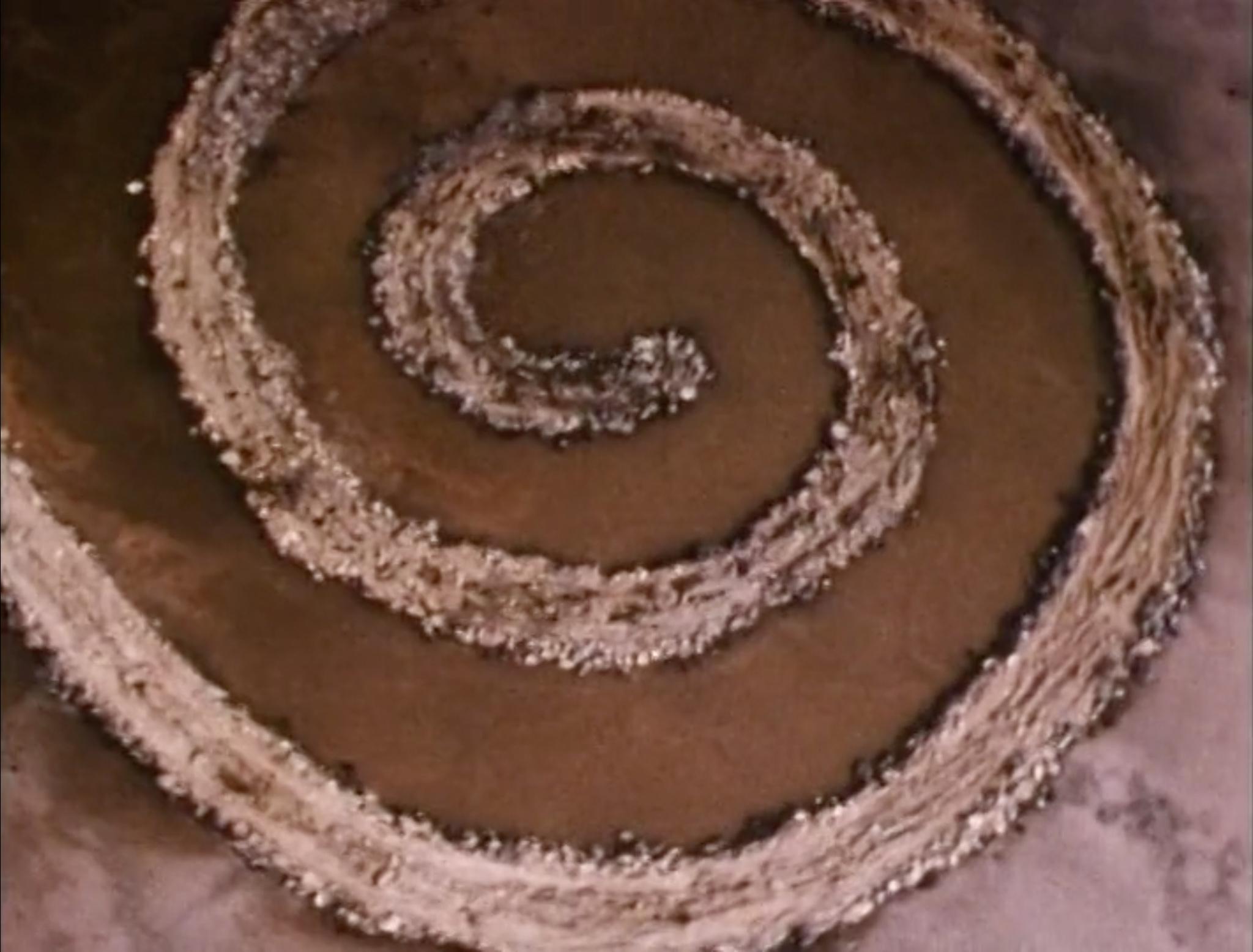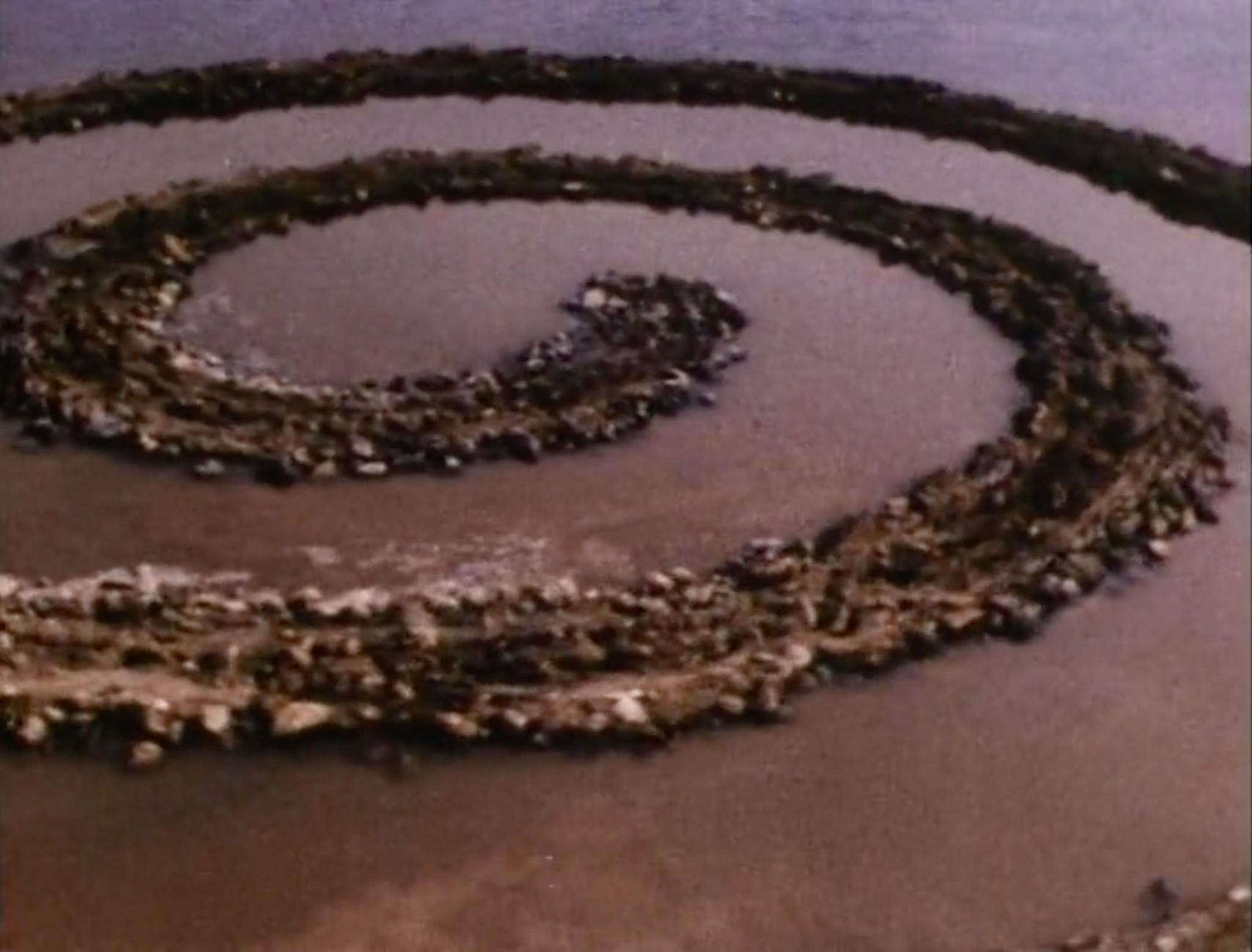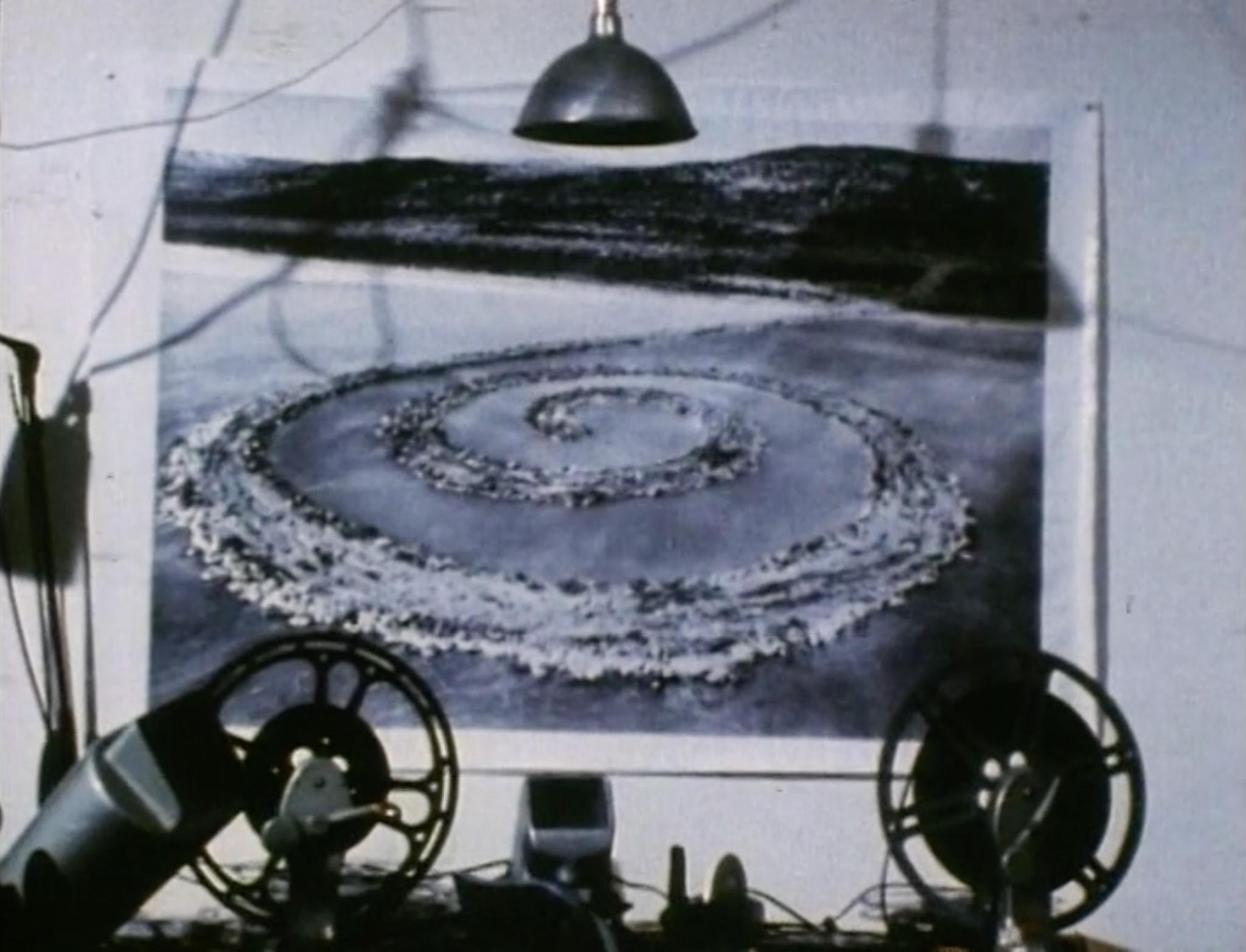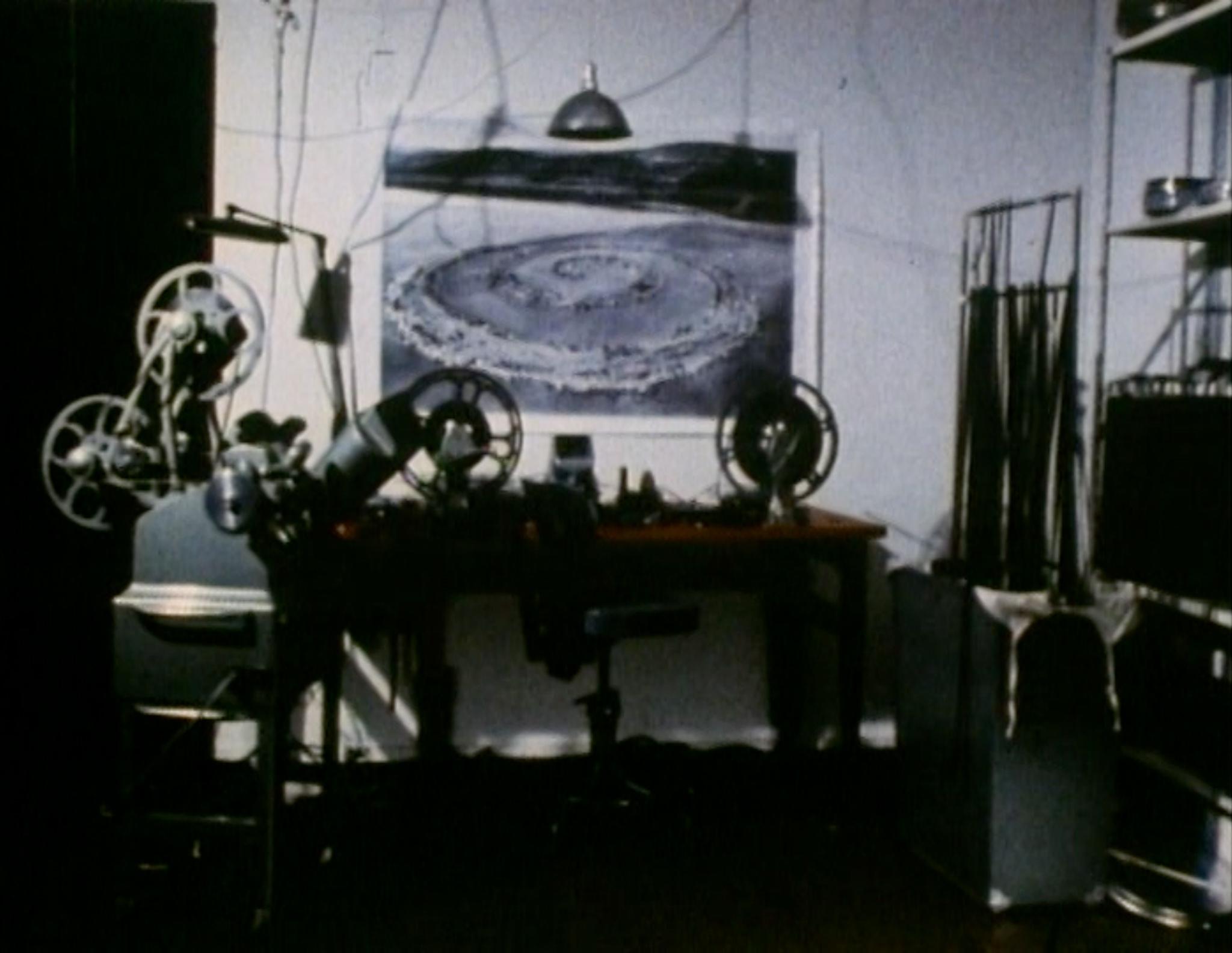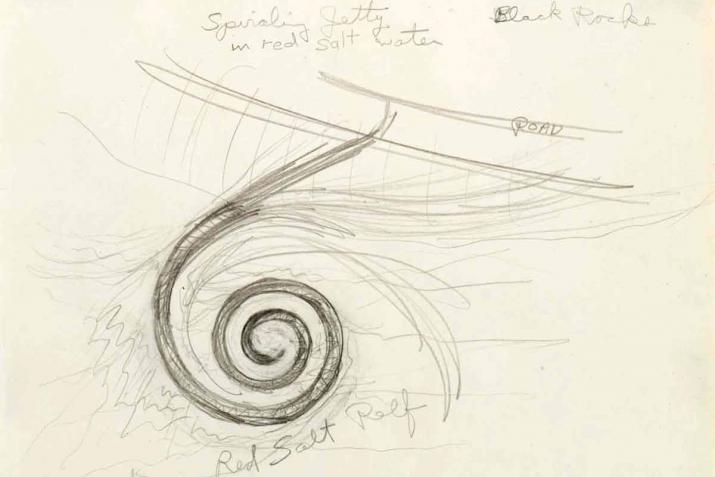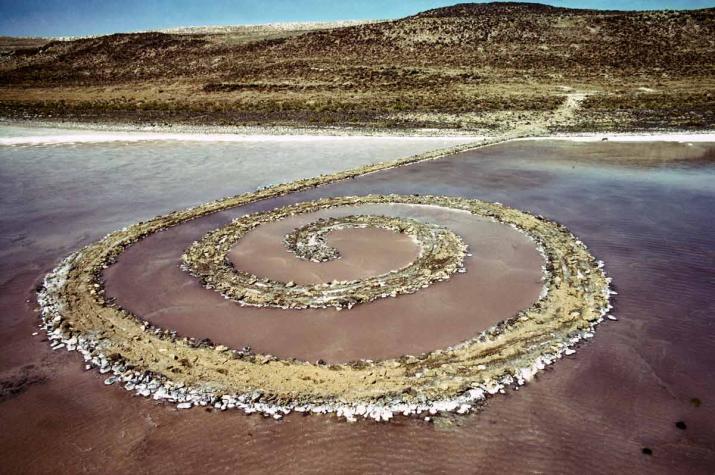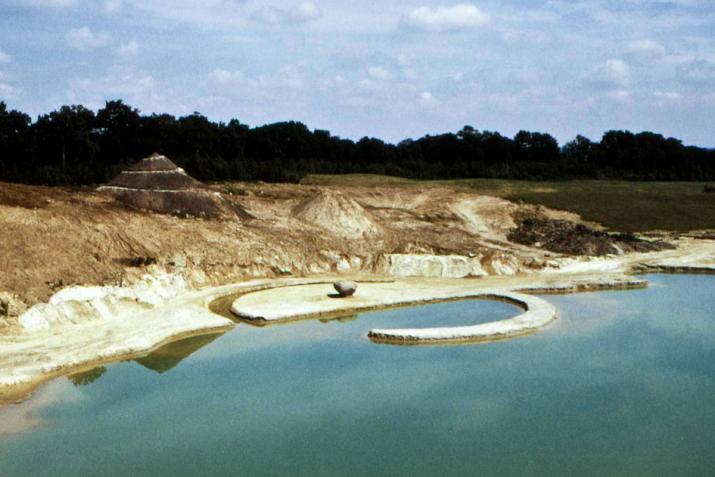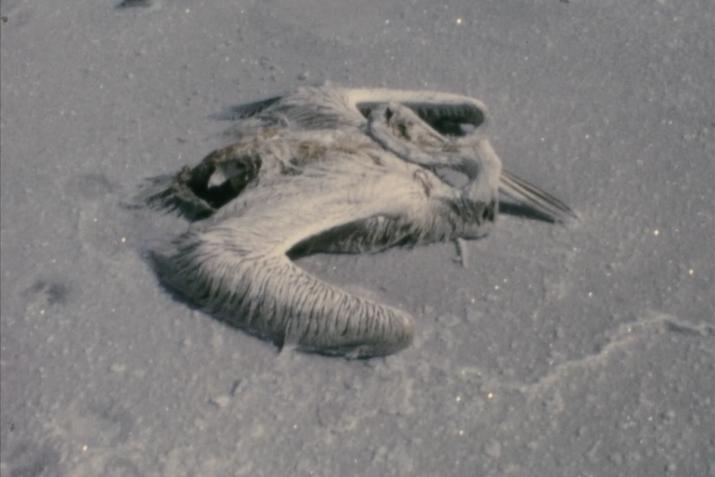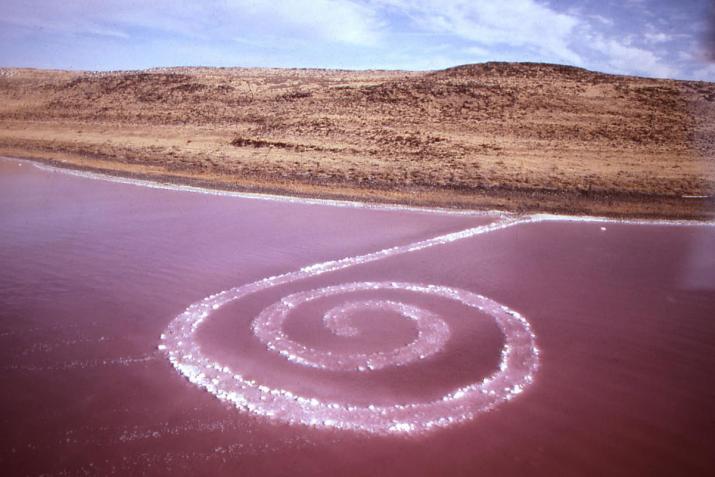
Spiral Jetty [film]
Robert Smithson made the film Spiral Jetty on returning to New York from Utah, after completing his landmark earthwork of the same name in April 1970. Spiral Jetty is located on the Rozel Point peninsula on the northeastern shore of Great Salt Lake. Made from over six thousand tons of black basalt rocks and earth collected from the site, Spiral Jetty stretches 1,500 feet long and 15 feet wide in a counterclockwise spiral. As well as the earthwork and film, Spiral Jetty is the title of an essay Smithson wrote in 1972. He describes returning home from Utah to New York (“the urban desert”) and he “contacted Bob Fiore and Barbara Jarvis and asked them to help me put my movie together.”
Smithson described the thirty-five-minute film as “a set of disconnections, a bramble of stabilized fragments taken from things obscure and fluid, ingredients trapped in a succession of frames, a stream of viscosities both still and moving.” The film starts with an image of the sun, moving to a bumpy drive out to the Great Salt Lake, to torn pages from an atlas discarded on the ground. Smithson’s voice forms the soundtrack. He tells stories and cites references as the film shows the making of the Spiral Jetty film and earthwork, the galleries of the American Museum of Natural History in New York, and Smithson himself running around the spiral of the earthwork. Smithson was fascinated by relationships between geological time and human time, and this film shows both. In the voiceover he compares industrial construction to the formation of the earth, and dinosaurs to digging machines and dumper trucks. There is something wonderfully eerie and hypnotic about the film.
Spiral Jetty is a discontinuous narrative, part science fiction, part document, part travelogue. On the soundtrack Smithson describes “the earth’s history seems at times like a story recorded in a book each page of which is torn into small pieces. Many of the pages and some of the pieces of each page are missing.” He described that the film set out to make this “fact” material.
In the first shots on the road heading to the Great Salt Lake, you will see time going forwards and backwards. Smithson described this as a “cosmic rupture” in his “cinematic universe.” In the final shots a large depiction of “Spiral Jetty” the earthwork hangs on the back wall of a film studio. The image was taken by Gianfranco Gorgoni, who took some of the most iconic photographs of the earthwork, and the studio belongs to Robert Fiore, who worked with Smithson on the making of this film.
